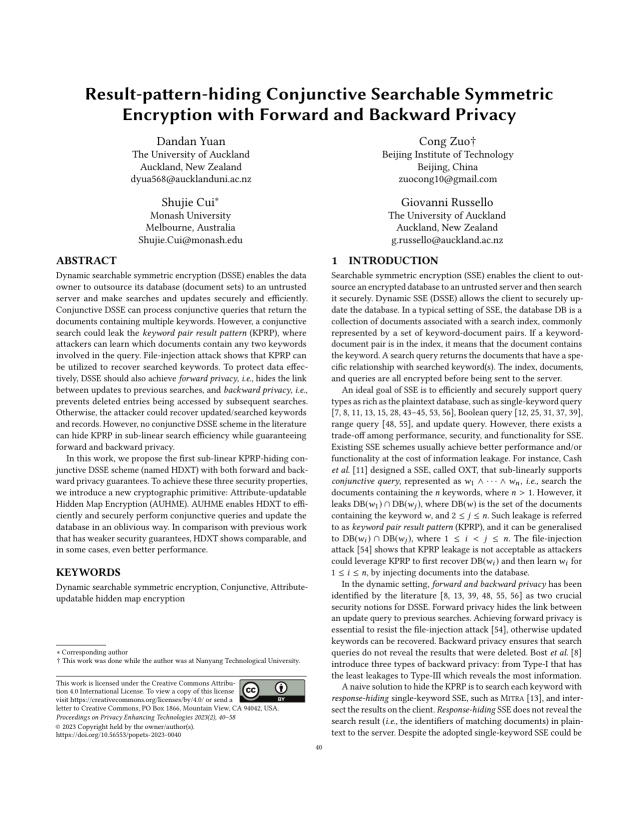Result-pattern-hiding Conjunctive Searchable Symmetric Encryption with Forward and Backward Privacy
Authors: Dandan Yuan (The University of Auckland), Cong Zuo (Beijing Institute of Technology), Shujie Cui (Monash University), Giovanni Russello (The University of Auckland)
Volume: 2023
Issue: 2
Pages: 40–58
DOI: https://doi.org/10.56553/popets-2023-0040
Abstract: Dynamic searchable symmetric encryption (DSSE) enables the data owner to outsource its database (document sets) to an untrusted server and make searches and updates securely and efficiently. Conjunctive DSSE can process conjunctive queries that return the documents containing multiple keywords. However, a conjunctive search could leak the keyword pair result pattern (KPRP), where attackers can learn which documents contain any two keywords involved in the query. File-injection attack shows that KPRP can be utilized to recover searched keywords. To protect data effectively, DSSE should also achieve forward privacy, i.e., hides the link between updates to previous searches, and backward privacy, i.e., prevents deleted entries being accessed by subsequent searches. Otherwise, the attacker could recover updated/searched keywords and records. However, no conjunctive DSSE scheme in the literature can hide KPRP in sub-linear search efficiency while guaranteeing forward and backward privacy. In this work, we propose the first sub-linear KPRP-hiding conjunctive DSSE scheme (named HDXT) with both forward and backward privacy guarantees. To achieve these three security properties, we introduce a new cryptographic primitive: Attribute-updatable Hidden Map Encryption (AUHME). AUHME enables HDXT to efficiently and securely perform conjunctive queries and update the database in an oblivious way. In comparison with previous work that has weaker security guarantees, HDXT shows comparable, and in some cases, even better performance.
Keywords: Dynamic searchable symmetric encryption, Conjunctive, Attribute-updatable hidden map encryption
Copyright in PoPETs articles are held by their authors. This article is published under a Creative Commons Attribution 4.0 license.

